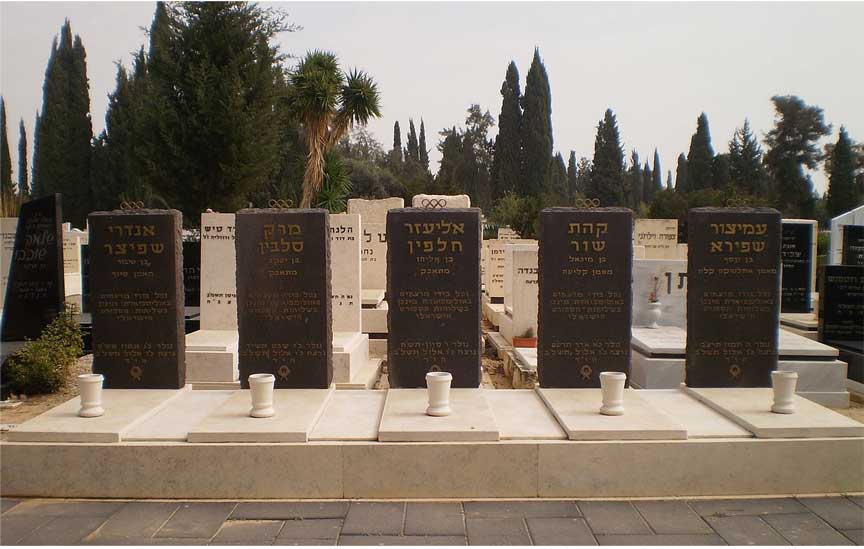Munich Olymic Massacre

On the morning of September 5th 1972, in the middle of the Munich Olympics a group of Palestinian terrorist from the Palestinian Liberation Organization, took nine Israelis hostage. Two of the Israelis were killed trying to resist the hostage takers. The Palestinians then demanded the release of 252 Palestinian prisoners. The Germans were unable to implement a rescue plan while the terrorist and hostages were in the Olympic Village. After Israel refused to negotiate, the terrorist demanded to be flown to Cairo. When they arrived at the airport the German police tried to rescue the hostages, but the plan failed. Instead all of the hostages were killed by the terrorist. In subsequent years Israel killed almost everyone who had any part in the plan.
On September 5, 1972, eight members of the Palestinian terrorist group, Black September, infiltrated the Olympic Village in Munich, Germany. Their primary target was the Israeli Olympic team, as they aimed to use the highly publicized event to draw attention to the Palestinian cause. At 4:30 a.m., the terrorists scaled the fence surrounding the Olympic Village and made their way to the apartments where the Israeli athletes and coaches were sleeping.
Wearing tracksuits and carrying duffel bags filled with weapons, the terrorists easily blended in with the athletes. Once inside, they took the Israeli team members hostage. In the process, two Israelis were killed—one during the initial break-in and the other in an attempted escape. The terrorists demanded the release of 234 Palestinian prisoners held in Israeli jails and two German Red Army Faction members held in Germany. They also demanded safe passage to Egypt.
The German authorities, caught off-guard by the attack, scrambled to respond to the situation. With no specialized counter-terrorism unit in place, the German police had to rely on regular officers, many of whom were untrained for such high-stakes situations. Negotiations between the terrorists and the German authorities began, but the attackers refused to back down on their demands. Eventually, the German officials proposed a plan to transport the terrorists and the hostages to Fürstenfeldbruck, a nearby military airbase, where they would supposedly provide an airplane for their escape.
In reality, the Germans devised a rescue mission to save the hostages once they arrived at the airbase. The plan involved sharpshooters ambushing the terrorists as they boarded the plane. However, the operation was plagued by miscommunication, lack of coordination, and insufficient intelligence. The authorities did not realize that there were eight terrorists instead of the presumed five, leaving the sharpshooters significantly outnumbered.
As the terrorists and hostages arrived at the airbase, the German sharpshooters attempted to carry out their plan. Chaos ensued, and the operation quickly unraveled. In the firefight that followed, five terrorists and one German police officer were killed. However, the remaining terrorists realized that their escape plan had been compromised and turned their weapons on the hostages. They killed all nine remaining Israeli captives.
After the tragic conclusion of the rescue attempt, the three surviving terrorists were arrested. However, they were later released following a separate hijacking incident in which the hijackers demanded their freedom as part of their ransom. The release of the terrorists sparked outrage in Israel and contributed to the country's decision to launch a covert operation, dubbed "Operation Wrath of God," which aimed to track down and assassinate those responsible for the Munich massacre.
 >
>